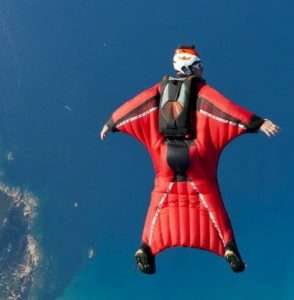The Thrill of Speed: Unveiling the Fall Rate During a Skydive
Skydiving is an exhilarating activity that combines the rush of adrenaline with breathtaking views. But have you ever wondered how fast you actually plummet towards the earth when you leap out of a plane? Buckle up, because we’re diving into the science of freefall and uncovering the terminal velocity of a skydiver.
Terminal Velocity: The Ultimate Speed Limit
The key concept to understand here is terminal velocity. This refers to the constant speed an object reaches when the air resistance acting against its downward motion exactly balances the force of gravity pulling it down. In simpler terms, it’s the fastest you’ll fall without accelerating further.
So, how fast is that exactly?
For an average skydiver in a belly-to-earth position, terminal velocity is around 120 miles per hour (mph), which is roughly equivalent to 200 kilometers per hour (kph). That’s pretty darn fast! It feels like a speeding motorcycle whipping past you, but with the added element of freefalling through the air – an experience unlike any other.
Factors Affecting Your Fall Rate
It’s important to remember that 120 mph is an average. Several factors can influence your individual terminal velocity during a skydive:
- Body Position:
Your posture significantly impacts air resistance. The classic belly-to-earth position creates minimal resistance, leading to the aforementioned 120 mph speed. However, if you were to spread your arms and legs wide (like a starfish!), you’d experience a higher drag, slowing your descent.
- Body Size and Shape:
A skydiver’s weight and overall surface area play a role. A larger individual with a broader build will experience more air resistance and might reach a slightly lower terminal velocity compared to a smaller person.
- Equipment:**
The type of jumpsuit worn by a skydiver can also influence the fall rate. Jumpsuits designed for experienced skydivers often have a tighter fit, minimizing drag. In contrast, a tandem student jumpsuit might be slightly baggier to ensure stability during the jump, potentially leading to a minor difference in terminal velocity.

The Initial Fall: Accelerating to Terminal Velocity
It’s worth noting that you won’t reach 120 mph instantaneously. When you first jump out of the plane, your speed will gradually increase due to gravity. It typically takes around 12 seconds for a skydiver to reach terminal velocity.
Deployment of the Parachute: Slowing Down for a Safe Landing
The freefall portion of a skydive is exhilarating, but it’s crucial to slow down for a safe and controlled landing. This is where the parachute comes in! Once the designated altitude is reached, the parachute is deployed. The large canopy significantly increases air resistance, dramatically reducing your speed to a safe descent rate for a comfortable landing.
So, the next time you dream of soaring through the sky, remember that you’ll be hurtling towards the earth at an impressive speed – but only for a short while. With the help of science and a trusty parachute, skydiving allows you to experience the thrill of flight with a safe and controlled descent.
